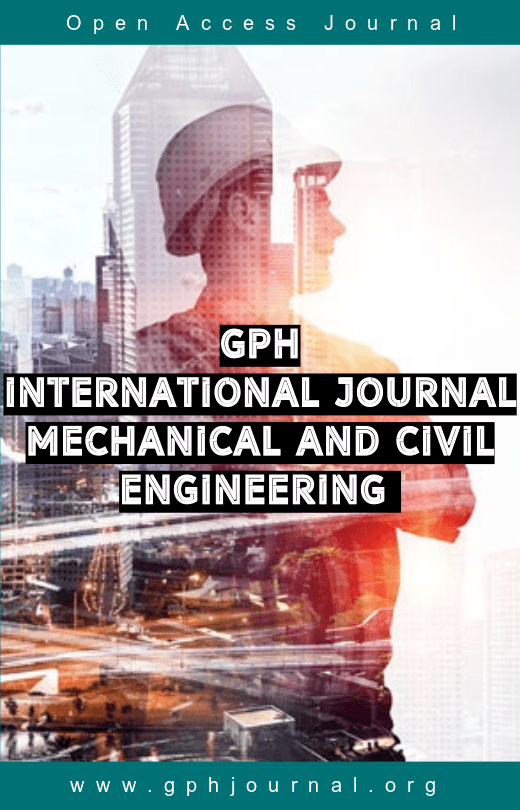THE EFFECT OF RETURN PERIOD AND SEDIMENTATION ON THE CAPACITY OF RIVER DISCHARGE CAPACITY IN SAMARINDA CITY, EAST KALIMANTAN
Abstract
Factors that affect flooding are due to the dense population that occupies the floodplain of the river, the city's drainage channel which has a relatively flat topography, the rapid development of housing in the floodplain area, the topography of the river in the upstream area has a steep slope so that if heavy rains and high erosion rates causes high peak flows resulting in flooding and erosion, siltation and reduction of river capacity can cause flooding caused by erosion of river beds and river banks due to the absence of vegetation cover, accumulation of sediment in the river sediment deposition causes elevation of the river bed and can reduce the capacity of river channels.Topography greatly influences flood inundation, the lower elevation of the area than the surrounding area often becomes an obstacle to the rate of surface runoff towards the river. Areas on the banks of the river are areas that are most prone to flooding in the event of a river overflow. Areas with a slope of <8% are areas that are difficult to absorb water, such as residential areas with solid pavement, which are more prone to flooding.The aim of this research is to predict the carrying capacity of the river's discharge capacity and provide an overview of flood-prone areas. Design flood discharge, maximum flood discharge and actual river capacity in the KarangMumus sub-watershed return period (years) for the planned flood discharge (Qrcn) = 578.39m3/s, maximum flood discharge (Qmak) = 578.62 m3/s, actual river capacity Q = 404.62m3/s, recommended river capacity = 987.85m3/s. Less capacity = 173.77m3/s. So it is necessary to have a recommended river capacity of = 987.85 m3/s. Due to sedimentation of = 0.2198m3/s so that the maximum capacity of the river is = 988.0698m3/s.
Downloads
References
Hadisusanto, N., 2011. Applications of Hydrology. JogjaMediautama, Malang, ISBN 978 – 602 - 9136 – 03 – 6.
Harto, S., 1981. Know the Basics of Applied Hydrology. Civil Engineering Student Publishing Bureau, GadjahMada University, Yogyakarta.
Ida, 2013. Analysis of the Capacity of Secondary Drainage Channels and Flood Management on JalanGatotSubroto Denpasar. Scientific Journal of Civil Engineering Infrastructure Electronics Volume 2 April 2013.
Indarto, 2010. Basic Hydrology Theory and Model of Hydrology. BumiAksara, Jakarta, ISBN 978 – 979 – 010 – 579 – 9 .
Kodoatie, 2008. Integrated Water Resources Management. Second Edition, Andi Offset Publisher, Yogyakarta.
Miharja, 2013. Vulnerability Analysis and Flood Risk Reduction in West Kalimantan Based on Geographic Information Systems. UNTAN Journal of Civil Engineering, Volume 13 Number 2.
Riman, 2012. Evaluation of River Capacity in Watersheds in Efforts to Control Damaging Forces. WidyaTeknikVol 20 No.2 ISSBN 1411-0660:49-55.
Sihotang, R., 2011. Design Flood Analysis with the HSS Nakayasu Method at the Gintung Dam. PESAT Proceedings, Volume 4 October 2011 ISSN 1858-2559.
Soemarto, C.D., 1986b. Engineering Hydrology. 2nd Edition, Erlangga, Ciracas, Jakarta.
Sosrodarsono, S., 1977. Hydrology for irrigation. Publisher PT PradnyaParamita, Jakarta
Sucipto, 2007. Analysis of the Capacity of the Banyan River Drainage System for Flood Control in the West Semarang Drainage Area. Journal of Civil Engineering and Planning Number 1 Volume 9-January 2007.
Sulianti, I., 2008. Comparison of Several Hydrological Flood Tracing Methods. Civil Journal volume 3 No.1 September 2008, ISSN 1907– 6975.
Suripin, 2004. Sustainable Urban Drainage System. Andi Offset, Yogyakarta, IBSN 979 – 731 – 137 – 6 .
Suroso, 2006. The Effect of Changes in Land Use on Flood Discharge in the Banjaran River Basin. Journal of Civil Engineering Volume 3 No.2 July 2006.
Triatmodjo, B., 2010, Applied Hydrology. Beta Offset, Yogyakarta
Copyright (c) 2022 Yayuk Sri Sundari

This work is licensed under a Creative Commons Attribution-NonCommercial-NoDerivatives 4.0 International License.
Author(s) and co-author(s) jointly and severally represent and warrant that the Article is original with the author(s) and does not infringe any copyright or violate any other right of any third parties, and that the Article has not been published elsewhere. Author(s) agree to the terms that the GPH Journal will have the full right to remove the published article on any misconduct found in the published article.




